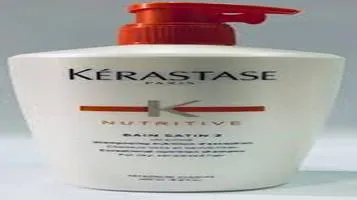Review of Rain Barrels: An Eco-Friendly Solution for Water Conservation
Rain barrels are containers used to collect and store rainwater runoff, typically from rooftops via downspouts. They serve as an eco-friendly solution for water conservation, allowing homeowners to harness natural precipitation for various garden and household needs. Typically made from plastic or repurposed materials, rain barrels come equipped with a spigot for easy access to the stored water and often have a mesh screen to prevent debris and insects from contaminating the supply. By reducing reliance on municipal water systems, rain barrels help lower water bills and alleviate stormwater runoff, which can reduce erosion and pollution. Ideal for watering gardens, lawns, and potted plants, they promote sustainable living and offer a practical step towards environmental stewardship.

As climate change intensifies and water scarcity becomes an increasingly pressing issue, the quest for sustainable and efficient methods of water conservation has never been more critical. One such method that has gained considerable attention in recent years is the use of rain barrels. These simple yet effective devices capture and store rainwater, providing an eco-friendly solution that benefits both homeowners and the environment.
What Are Rain Barrels?
Rain barrels are large containers designed to collect and store rainwater runoff from rooftops via the gutter system. Typically made from plastic, metal, wood, or even repurposed food-grade barrels, they range in size, with common capacities being between 50 to 100 gallons. Some rain barrels are equipped with advanced features like spigots, overflow valves, and even insect screens to keep out debris and pests.
Installation and Usage
Setting up a rain barrel is straightforward and can usually be completed within a couple of hours. First, you need to position the barrel under a downspout to ensure it captures as much runoff as possible. The downspout may need to be shortened or adjusted to fit the barrel properly. Once in place, the barrel will automatically start collecting rainwater during the next rainfall.
The water collected can be used for a variety of purposes, most commonly for gardening and lawn care. Rainwater is naturally soft and free of chemicals like chlorine and fluoride, making it ideal for plants. Additionally, it can be used for washing cars, cleaning outdoor areas, and even flushing toilets if properly filtered and treated.
Environmental Benefits
One of the primary advantages of using rain barrels is their positive impact on the environment. By capturing and storing rainwater, these barrels help reduce the amount of runoff that can cause erosion, flooding, and contamination of waterways with pollutants like pesticides and fertilizers. This is particularly important in urban areas with impervious surfaces such as roads and pavements that exacerbate runoff problems.
Moreover, rain barrels can significantly reduce the demand for municipal water supplies. With less reliance on treated water for outdoor uses, communities can conserve potable water for essential needs. This is a crucial consideration in regions experiencing drought or facing stringent water restrictions.
Economic Benefits
Investing in a rain barrel can also lead to substantial cost savings. While the initial investment may range from $50 to $200 depending on the type and size of the barrel, the long-term savings on water bills can be significant. For avid gardeners and homeowners with extensive landscaping, the reduction in water usage can pay for the rain barrel within a few seasons.
Additionally, some municipalities offer rebates and incentives for installing rain barrels as part of their water conservation programs. These financial incentives can further offset the initial cost, making rain barrels an even more attractive option.
Challenges and Considerations
Despite their numerous benefits, rain barrels are not without challenges. One of the primary concerns is the potential for mosquito breeding in standing water. To mitigate this risk, it is essential to use barrels with tight-fitting lids and insect screens. Regular maintenance, such as cleaning the barrel and ensuring proper drainage, can also help prevent mosquito infestations.
Another consideration is the limited capacity of rain barrels. During heavy rainfall, a single barrel may fill up quickly, leading to overflow and lost water. To address this issue, some homeowners opt to link multiple barrels together or invest in larger capacity systems. Additionally, incorporating an overflow hose can direct excess water away from the foundation of the house, preventing potential water damage.
Conclusion
Rain barrels offer an accessible and effective means of promoting water conservation and environmental stewardship. Their ability to capture and store rainwater for various uses not only reduces the strain on municipal water supplies but also helps mitigate the adverse effects of stormwater runoff. While there are some challenges to consider, such as mosquito control and limited capacity, the benefits far outweigh the drawbacks.
For homeowners looking to make a positive impact on the environment and save on water bills, investing in a rain barrel is a practical and rewarding choice. As we continue to face the challenges of climate change and water scarcity, adopting sustainable practices like the use of rain barrels will be essential in creating a more resilient and eco-friendly future.






